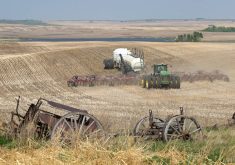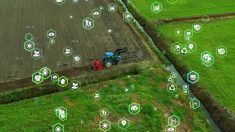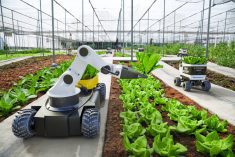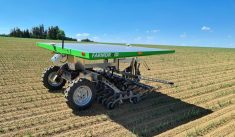Automation and artificial intelligence are poised to reduce some of agriculture’s labour shortages, but the Conference Board of Canada still expects a struggle to find and train agriculture and agri-food workers for a high-tech future.
“While automation technologies reduce demand for low-skilled workers to perform these tasks, these changes will also lead to the emergence of new roles requiring a more educated workforce,” the think tank said in a report released July 31.
The report predicted that one third of agricultural jobs are “at risk of automation” in the next decade, with precision agriculture, advanced machinery and sensor technology having the highest potential to automate repetitive tasks.
Read Also

Gene editing up a better canola crop: FEATURE
Gene editing techniques and maize genetic material may be the seed for more robust and stress tolerant canola plants. Canadian research is trying to make it happen.
Why it matters: Canada continues to face a significant agricultural labour shortage. A 2023 survey from the Canadian Agricultural Human Resources Council found that 49 per cent of respondents could not find needed workers.
According to the report, precision technologies like variable rate, GPS-guided equipment and yield mapping have been growing steadily, particularly on large farms.
In broad-acre farming, data-driven tools for decision-making and management are more prevalent than automation, said Jay Steeves, dean of the Werklund School of Agriculture Technology at Olds College in Alberta.
“Our adoption rates around some of the autonomous machinery … the idea of replacing the human element has not been adopted to the high level as some people might like it to be,” Steeves said.
But everyone involved in agriculture sees the need for more efficiency, he noted. Hence the bumpy rise of data-based agriculture. However, slow uptake isn’t the same as no uptake. Artificial intelligence and machine learning have been incorporated into agronomic tasks like weed monitoring, crop scouting and soil testing.
Agriculture technology is also being adopted in indoor agriculture through environmental control and lighting, Steeves said. It holds potential to introduce robotics.
In livestock farming, barn environmental controls, robotic milkers and even robotic pressure washers fit the category of automation.
What jobs will be lost?
The fastest declining occupations in agriculture, according to the Conference Board of Canada, are managers, specialized livestock workers, farm machinery operators, livestock labourers, harvesting labourers, accounting technicians and bookkeepers. These are predicted to decline by 4.7 to 9.5 per cent between 2023 and 2033.
“These declines underscore automation’s impact on traditional managerial roles and manual labour tasks as well as the streamlining of administrative functions through technological integration,” the report said.
Conversely, the top list of rising occupations includes nursery and greenhouse labourers, truck drivers, landscape and horticulture technicians and specialists, pet groomers, animal care workers and biological technologists and technicians.
The challenge of ‘upskilling’
Preparing for technological change is a major challenge for agriculture and agri-food, the Conference Board of Canada said. Employers will need new types of workers with new skills. Different training or “upskilling” will be important, the report said.
The rural nature of agriculture adds challenges due to a smaller talent pool. Rural residents may also struggle to access training activities, the think tank warned.
Steeves acknowledged the rural-urban divide in ag-tech education.
“You’ll have those who are very invested in agriculture, want the agriculture experience, and then they’re maybe looking to add on the technology,” he said. “But then we’re also noticing that, you know, we need to make an effort to try to attract some of our urban members.”
Olds is looking to recruit tech-savvy students and help them recognize their potential role in agriculture, even if it’s not in the field. Rural students, meanwhile, may not have had the same access to technology and may be worried that they’re behind, Steeves said. They may be more driven to the people-oriented agriculture side.
The July report also suggested existing workers should be trained to shift to more tech-oriented jobs.
This “would not only benefit workers by providing pathways to secure and fulfilling employment but would also contribute to the long-term resilience and prosperity of rural economies and the agriculture industry as a whole,” the report said.
It highlighted skills in digital tools, product design, complex problem solving and soft skills like adaptability.




















